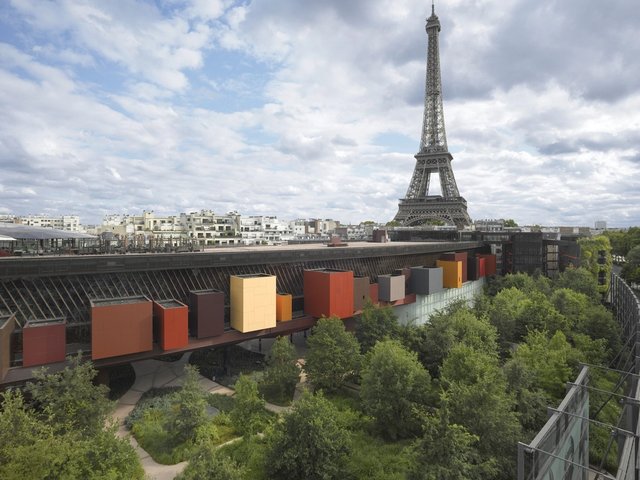Paris’s huge new museum of ethnic art, the Musée du Quai Branly, designed by Jean Nouvel, is set to open this month. The museum has four permanent exhibition spaces dedicated to ancient and contemporary work from Africa, Asia, Oceania and the Americas. The collection includes some 300,000 artefacts—of which around 3,500 pieces will be on display at any one time—as well as a 700,000 strong photographic collection. The new institution will also host ten temporary exhibitions annually and houses an on-site university. Eight Australian Aboriginal artists have created new works for the ceilings and walls of the building.
However the €233m ($299.5m) state-funded institution continues to attract controversy since President Chirac announced, in 1996, the creation of a museum to house art brought to France by its colonial explorers.
In 2003, staff at the Musée de l’Homme in Paris, France’s leading museum of anthropology and ethnology, went on strike in protest at the imminent transfer of their collection of 225,000 works to the Quai Branly. The new museum also houses 50,000 works from the Musée National des Arts d’Afrique et d’Océanie in the west of the capital, now an aquarium. This institution was criticised for presenting a “racist” context to the works on show. However some believe that the move to Quai Branly may only reinforce stereotypes. Botanist Patrick Blanc’s design for a “vegetal wall”—a covering of plants on one side of the museum’s offices—gives the “impression of a jungle” according to press reports. (The remaining 25,000 pieces in the new museum were purchased or donated).
Another row broke out in 2000 when two 2,000-year-old Nok Nigerian sculptures went on view in the Louvre’s Pavillon des Sessions in an exhibition of 120 works intended as a forerunner show to the opening of the Musée du Quai Branly. The terracottas, bought from a Brussels dealer, were thought to have left Nigeria illegally, and drew immediate condemnation by the International Council of Museums (ICOM). However an investigation by The Art Newspaper (June 2000, pp1,9) revealed that President Chirac had struck a deal whereby the French would provide technical assistance to Nigerian museums, and in return Nigeria would give its blessing to the Nok purchase. At the time it was reported that the disputed sculptures would eventually go on show at the Musée du Quai Branly, but the 120 works from the Branly collection will remain permanently at the Louvre. A spokeswoman for the new museum said: “The Louvre exhibition shows that art from the four continents has equal value… [to] European art.”
Originally appeared in The Art Newspaper as 'France’s colonial art gets a new home'


